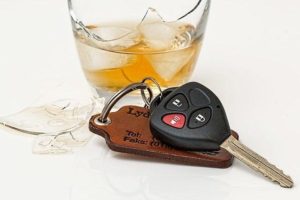Choosing the right motorcycle helmet can be easy and fun! If you ride a motorcycle or even a motorized scooter, a helmet is the most critical part of your gear. Years ago, helmets were heavy, restrictive, and hot. Modern helmets, however, are comfortable, relatively lightweight, and come in a wide variety of styles.
Before you hit the freeway with your new bike, make sure you invest in an appropriate helmet. There are a number of different helmet styles to choose from, including full face helmets, half shells, modular, and open face.
Do I Really Need a Helmet?
In many states, you are REQUIRED to wear a helmet. But even if it’s not a law in your state, wearing a helmet is important for all bikers. Modern helmet restrict wind noise so you can often hear better. They protect your eyes from wind, so you can actually see better. And, if you are involved in a crash, they are the best chance your head has to stay safe. Traumatic brain injury is very real, and very debilitating. So, wear a helmet.
For a free legal consultation,
call 1-800-668-6729
Consider Your Personal Riding Needs.
If you are a beginner, you may want to find a helmet that provides adequate protection but doesn’t break that bank. That’s because you may find that your needs and preferences change within a short time of riding. Instead of investing a lot of money in a helmet that you may want to replace in a few months, find a helmet that offers good protection for a lower price. If you ride as part of a pack, you probably want to find a helmet that has built in communication options.
What Features Do You Need?
Helmets come in a variety of styles and with different features. Helmet weight is generally around 1400 to 1900 grams. The weight should be balanced across your head and shoulders so that no area of your body is facing excessive strain. Helmets are made with different materials – from fiberglass composite and polycarbonate to carbon fiber. These materials also vary depending on weight. Some modern helmets have integrated communication features, wind reduction options, and even built in sunshades.
Click to contact our personal injury lawyers today
Safety First!
Safety features vary from helmet to helmet. Check to determine the safety ratings of the helmet you have selected. DOT indicates the United States Department of Transportation. ECE22.02 represents the UN Economic Commission for Europe, and Snell2010 is a private safety organization. Snell certification represents a premium certification and should be considered superior to DOT or ECE.
Complete a Free Case Evaluation form now
Helmet Size Matters.
Often, the safest motorcycle helmet is the one that fits you best. Before you go randomly trying on helmets, it is important to determine your helmet size. Measure around your head just above your eyebrows and ears. Compare this size too that of manufacturers to determine sizing. Try on the helmet to determine proper fit. A well fitted helmet should fit securely and may not go on smoothly at first. There should not be any pressure points. Often, motorcycle helmet padding can be adjusted to secure a better fit. Motorcycle helmet padding usually comes with helmets and is fully adjustable. Remember that in the event of a crash, your head will often face a tremendous impact. A loose helmet will easily fly off in a crash, and therefore will offer no protection.
Head Shape Matters, Too!
You will want to choose a helmet that will fit the shape of your head, as well. Choose the wrong one, and you’ll have excessive weight on pressure points. It may not seem like a problem wearing a helmet for a few minutes, but hours in and you will be regretting your purchase.
How Much Is It Gonna Cost Me?
The safest motorcycle helmet is not necessarily the most expensive. Obviously, helmet price is a big issue. Prices vary due to the construction and material of the helmet, brand names, and added features. You can find a reasonable beginners full-face helmet for around $100. Although It might not offer a full line of features, it should provide a secure fit and offer great protection in the event of a motorcycle crash. Pricier helmets with additional options can near $1000, however it is important to remember that the additional cost does not necessarily represent better protection if you crash.
Can I Use My Helmet After a Crash?
The answer to this is easy – absolutely not! Structural damage to a helmet is often not visible, and a helmet that has been worn in a crash may not be able to provide much protection in a subsequent crash. Obviously if you just skidded and ended up with some road rash without your head touching the pavement you are probably fine. But if your helmet struck anything, it’s best to purchase a new one. Helmets are constructed with a polystyrene liner that, once fractured, will not effectively absorb impact. If you’ve been in a crash- replace your helmet. It’s as simple as that!
If you have been involved in a crash, even if you were not wearing a helmet, contact the team at Kass & Moses. Our motorcycle attorneys have over 25 years experience handling motorcycle injury cases, so you can rest assured that we will do all we can to help you recover! Contact us today at 1-800-MOTORCYCLE.
Call or text 1-800-668-6729 or complete a Free Case Evaluation form


